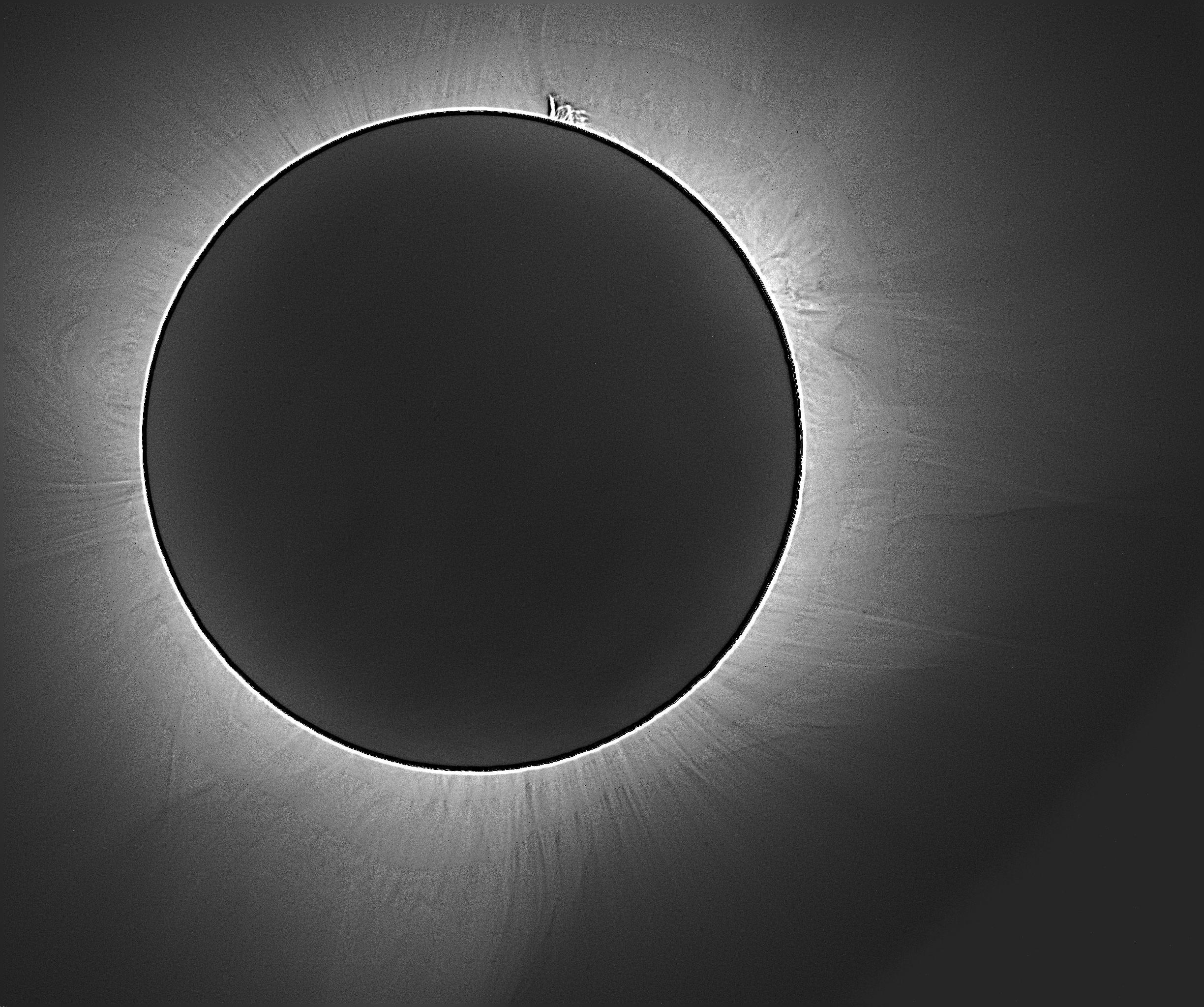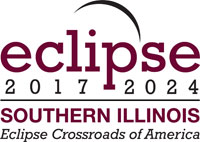
Indonesia eclipse -- The sun’s elusive and seldom-seen corona is clearly visible in this image captured by a team of researchers from Southern Illinois University Carbondale who traveled to Indonesia. The trio gathered valuable data and captured amazing images during a total eclipse of the sun last week, in a trial run for the same astronomical event set for Carbondale next summer. (Photo provided)
March 16, 2016
Indonesia eclipse offers trial run for researchers
CARBONDALE, Ill. – A trio of researchers from Southern Illinois University gathered valuable data and captured amazing images in Indonesia during a total eclipse of the sun last week, in a trial run for the same astronomical event in Carbondale next summer.
The group, including a physics specialist, an undergraduate student and a retired faculty member, flew down to view the event, which took place March 8-9, in a trip sponsored by NASA through a grant from the National Solar Observatory. The trip gave the trio a first-hand look at how to prepare for the eclipse set for Aug. 21, 2017, in the United States, said Bob Baer, specialist in the Department of Physics at SIU.
“The lessons we learned will be of great use in our own outreach efforts and events, and in preparation for SIU to help support scientific observations in 2017,” Baer said.
SIU is gearing up to play a major role in the 2017 eclipse (eclipse.siu.edu), which will feature the first total solar eclipse over the mainland United States since 1979. The eclipse viewing path and shadow that day will sweep across the country from northwest to southeast, with its point of greatest duration a few miles south of Carbondale. Officials expect some 30,000 to 50,000 people to descend on the area for the happening. The university’s planning, led by a campus-community committee, has been underway for a year. 
Not only that, but a second such event is due in 2024. The intersection of the two eclipse paths is just south of Carbondale over Cedar Lake. No other place in the world will offer the opportunity to observe these two eclipses from the same ground-based spot.
The Indonesia trip allowed Baer, along with Sarah Kovac, a junior in physics, and retired SIU faculty member Fred Isberner, to practice for their role in the nationwide effort to capture a “movie” of the 2017 total eclipse. The effort, known as the Citizen CATE Experiment (Continental America Telescopic Eclipse), will see SIU cooperate with about 60 other teams recording the event across the United States. The National Solar Observatory will use the data collected to assemble a visual record of the total eclipse, in an attempt to capture elusive, moving pictures of the sun’s corona, which is usually obscured by the sun’s brightness.
While in Indonesia, Baer and Kovac used a telescope fitted with a special camera to record images of the total solar eclipse visible from a spot on an island, while Isberner made observations from a cruise ship in the Makassar Strait. The trio was one of five teams recording the event from various spots along the path of darkness created by the eclipse.
The teams were spread out along the path in order to get images from different locations and to overcome any weather complications, as well as to extend the time of the images, just as they will be in the United States next summer. The teams had favorable weather conditions in four of the five locations.
While they were there, the SIU contingent also worked with local schools and education officials to give talks and take part in the country's outreach efforts on the eclipse, Baer said.
“The trip was very successful,” he said. “We were able to not only see the eclipse first hand, but take data on it for the Citizen CATE Experiment. We also got several hours of video that will be used to train other observers and to show to our event planning committee.
“We saw the eclipse from a small island that is about 60 miles wide and that was completely in totality,” Baer said, meaning the sun was completely blacked out by the moon when viewed from that area. “In some ways, the way the island prepared for the eclipse is similar to how our region is preparing.”
Kovac said the entire experience was eye-opening and remarkable, but working with local high school students stands out.
“They not only welcomed us with open arms, but were genuinely intrigued in the material and excited about what we had to say,’ Kovac said. “The amount of gratitude we received for being there was an incredible feeling.”
Now that they’re home, the team members will begin conducting data analysis for the Citizen CATE Experiment. The team gathered about 18 gigabytes of data using the telescope and another 300 GB of video images during the trip, Baer said. Preliminary analysis indicates the data is very useful, Baer said, and when combined with the other teams’ data will help scientists observe the ways in which the sun’s corona evolves over time.
The teams from the four universities involved also will send students to the National Solar Observatory this summer for a program aimed at undergraduate researchers where they will work on analyzing the data.
“We expect publications to come out of the project, and all of our data will be released publicly for others to use and analyze,” Baer said.
Kovac said being so involved in the eclipse events is providing her with invaluable research experience as a student.
“I often get asked what I plan to do after I finish my doctorate, and before this experience, I didn't really have an answer,” she said. “Now I have a better idea of what I would like to spend my life working on and how it's going to contribute to astrophysics.”
The SIU team also is working with a Southern Illinois high school teacher to put together a movie about its CATE efforts, which will include the background on its members’ training, their observations in Indonesia and observations in 2017.
“Our CATE team locally will continue to train on the telescopes, and we'll be modifying procedures slightly for 2017,” Baer said. “We have a lot of planning to do for 2017 through the eclipse steering committee and I'm really looking forward to sharing what was learned in Indonesia.”
To learn more the Citizen CATE Experiment, go here.
